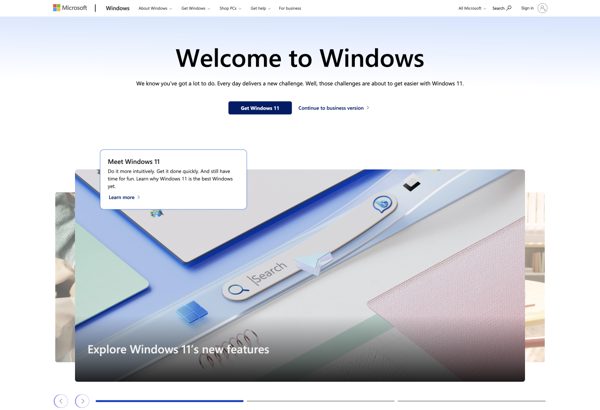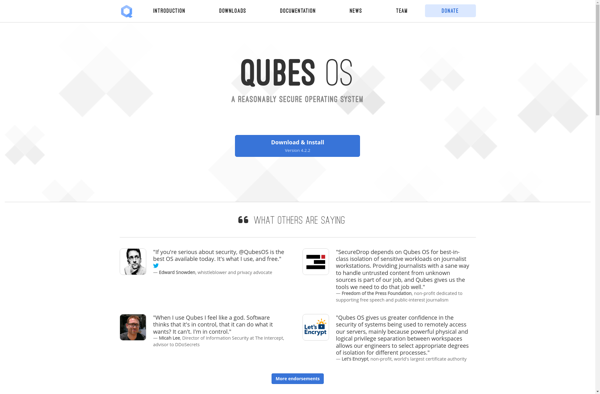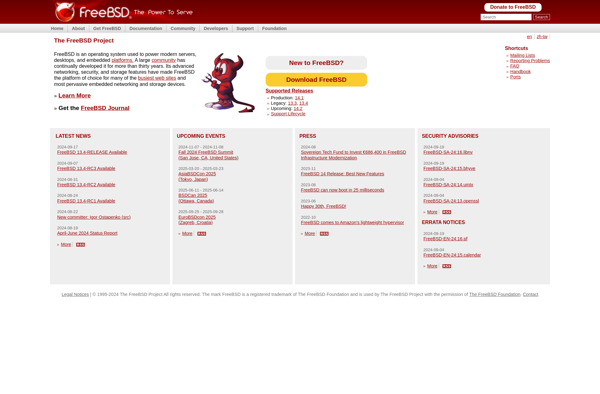AOSC OS
AOSC OS is a Linux distribution developed by the Anthon Open Source Community in China. It focuses on flexibility, openness, localization and providing a free operating system.
AOSC OS: A Customizable and Localized Linux Distribution
AOSC OS is a Linux distribution developed by the Anthon Open Source Community in China. It focuses on flexibility, openness, localization and providing a free operating system.
What is AOSC OS?
AOSC OS is a Linux distribution developed by the Anthon Open Source Community (AOSC) in China. It is based on the Linux kernel and various free and open-source software packages.
Some key features and focuses of AOSC OS include:
- Flexibility - AOSC OS offers multiple desktop environment options like KDE, GNOME, Cinnamon and more. Users can choose the setup that works best for them.
- Openness - The project aims to provide free and open source solutions while encouraging contribution and participation from the community.
- Localization - AOSC OS provides extensive translation and localization supports, especially for Chinese language users.
- Free - AOSC OS and all its components are entirely free to use with no proprietary software or components.
Overall, AOSC OS strives to be a community-driven, flexible Linux distribution catered towards Chinese-speaking users. With continued development, it aims to offer a compelling free and open computing platform.
AOSC OS Features
Features
- Based on Linux kernel
- Supports multiple desktop environments like KDE, GNOME, MATE, etc
- Uses its own software repository called AOSC OS Repository
- Supports running Android apps through Anbox
- Provides good hardware compatibility and driver support
Pricing
- Open Source
Pros
Free and open source
Flexible and customizable
Good community support
Regular software updates
Good for Chinese users due to localization
Cons
Limited hardware support compared to major distros
Smaller user base and community
Most documentation only available in Chinese
Official Links
Reviews & Ratings
Login to ReviewThe Best AOSC OS Alternatives
Top Os & Utilities and Linux Distributions and other similar apps like AOSC OS
Here are some alternatives to AOSC OS:
Suggest an alternative ❐Windows 10
Windows 10 is the latest version of Microsoft's operating system, released in 2015. It builds on the core foundations of Windows 7 and 8 and brings back the familiar Start menu while also introducing new features.Some key new features and improvements in Windows 10 include:The return of the Start Menu...

Windows 11
Windows 11 is the latest version of the Windows operating system released by Microsoft in 2021 as the successor to Windows 10. It introduces several visual changes including rounded corners, a new centered Start menu and taskbar, and revised app icons using soft pastel colors and the Fluent Design system.Under...

MacOS
macOS is the operating system created and developed by Apple Inc. exclusively for its Macintosh computers and laptops. It was originally named Mac OS X until 2012 and then OS X until 2016, when Apple renamed it to macOS to bring it inline with the branding of its other operating...

Zorin OS
Zorin OS is a Linux distribution designed specifically for new Linux users coming from Windows or macOS backgrounds. It is based on Ubuntu and uses the GNOME desktop environment, but has been customized with themes, layouts, and tweaks to provide a familiar experience for those accustomed to other operating systems.A...

Qubes OS
Qubes OS is a security-oriented open source operating system for personal computers that focuses on compartmentalization and isolation to increase security. It utilizes Xen-based virtualization to allow the user to compartmentalize different applications and data into isolated compartments called qubes.Some key features of Qubes OS include:Color-coded qubes for easy visual...

ReactOS
ReactOS is an open-source operating system intended to allow Windows applications and drivers to run natively on Linux/UNIX-like systems. The project aims to provide binary-level compatibility with Windows through clean-room reverse engineering of the Windows API. Development began in 1996 and continues actively today.ReactOS features a Windows-like graphical user interface...

Elementary OS
elementary OS is a Linux distribution based on Ubuntu that focuses on providing a fast, open, and privacy-respecting computing experience. It comes with a custom desktop environment called Pantheon that features a sleek and intuitive user interface designed for productivity.Some key features of elementary OS include:An app store called AppCenter...

FreeBSD
FreeBSD is an advanced open source computer operating system used for modern servers, desktops, and embedded platforms. Originally derived from BSD Unix, FreeBSD offers compatibility with a wide range of applications and drivers while providing advanced performance, security, and networking features.Some key aspects of FreeBSD include:Excellent stability and reliability based...

Lubuntu
Lubuntu is a Linux distribution based on Ubuntu that uses the lightweight LXDE desktop environment. Some key facts about Lubuntu:It has lower system requirements than standard Ubuntu, making it a good choice for older computers or hardware with limited resources.Uses the LXDE desktop environment which is lightweight, fast, and energy-efficient.Includes...

Kubuntu
Kubuntu is an officially recognized flavor of the Ubuntu Linux distribution that features the KDE Plasma desktop environment instead of Ubuntu's default GNOME desktop. Kubuntu provides a user-friendly, customizable, and visually appealing desktop experience powered by the latest KDE Plasma technologies.Some key features and characteristics of Kubuntu include:Uses the lightweight...

NixOS
NixOS is a Linux distribution that aims to improve the state of Linux package management and system configuration. Some key features and goals of NixOS include:Reliability - NixOS utilizes atomic upgrades and rollbacks to ensure a reliable system state. If an upgrade fails, the system can automatically roll back to...
